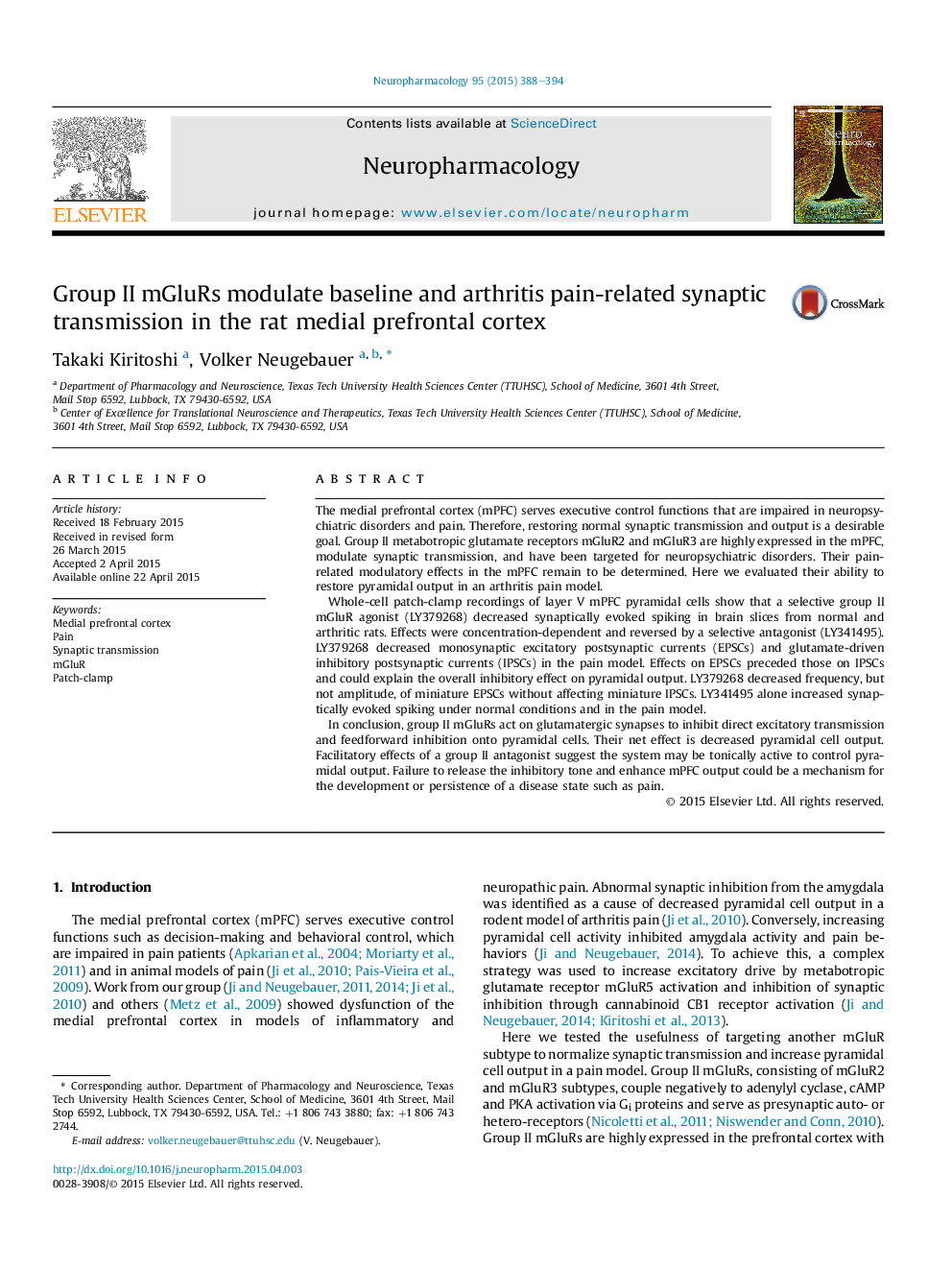| Article ID | Journal | Published Year | Pages | File Type |
|---|---|---|---|---|
| 5813719 | Neuropharmacology | 2015 | 7 Pages |
Abstract
In conclusion, group II mGluRs act on glutamatergic synapses to inhibit direct excitatory transmission and feedforward inhibition onto pyramidal cells. Their net effect is decreased pyramidal cell output. Facilitatory effects of a group II antagonist suggest the system may be tonically active to control pyramidal output. Failure to release the inhibitory tone and enhance mPFC output could be a mechanism for the development or persistence of a disease state such as pain.
Related Topics
Life Sciences
Neuroscience
Behavioral Neuroscience
Authors
Takaki Kiritoshi, Volker Neugebauer,
